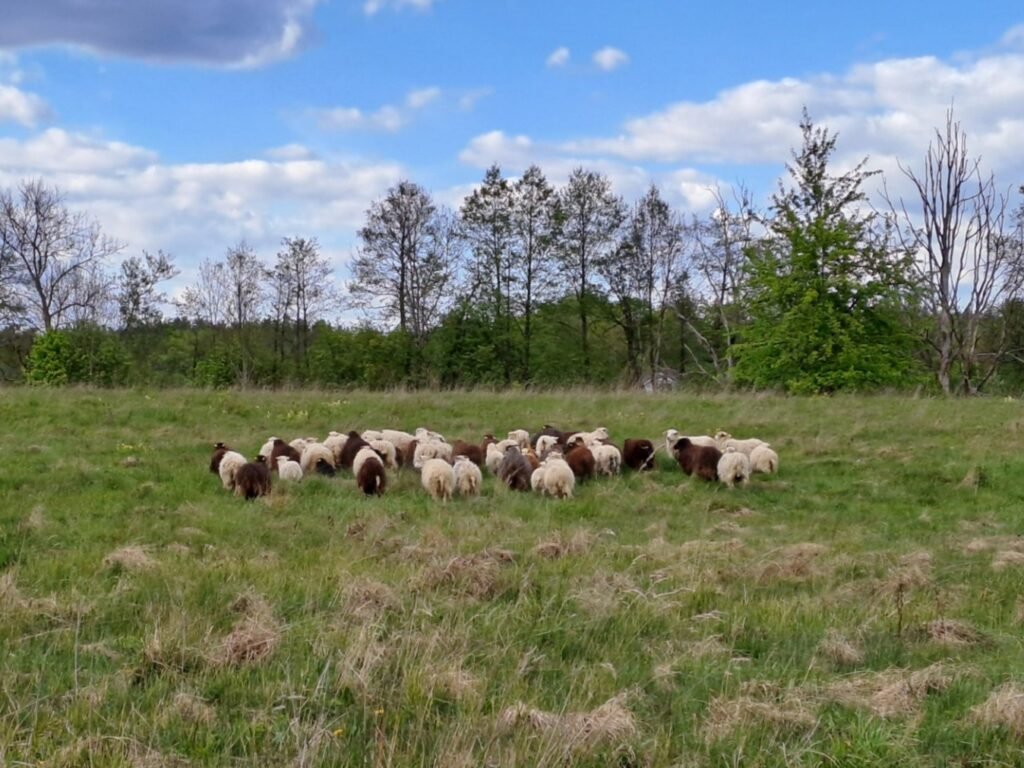
Photo: Tautgirdas Masiulis
For the fourth year in a row, grazing has continued on the Pabiržė Peninsula in Lake Lūšiai (Ignalina district) during the grazing season. This is an environmental initiative implemented within the LIFE integrated project “Optimization of Natura 2000 Network Management in Lithuania”, the aim of which is to revive the biodiversity of meadows in the most natural way.
“Livestock grazing on the Pabiržė Peninsula is an old tradition. Since ancient times, the residents of the village of Meironys have been ferrying cows to it during the grazing season, because reaching the peninsula by land was difficult due to the marshy Pabiržė River. This allowed maintaining the good condition of the meadow habitats and allowing rare plant and bird species to breed,” said Tautgirdas Masiulis, coordinator of the Aukštaitija National Park project activities.
However, over time, the number of grazing cattle on the peninsula decreased, and fewer and fewer cows were ferried during the grazing season each year, until finally grazing was stopped altogether. The area has become overgrown with low-value trees and shrubs, and the rare species that used to dominate it have disappeared.
Restoration work is currently ongoing on the Pabiržė Peninsula – ensuring that the area once again becomes suitable for the restoration of the biodiversity that prevailed decades ago. In 2020, the area was opened for grazing in the scrublands that were cut down. In June of the same year, grazing by cows began. And from 2022, they were replaced by sheep.
The fact that the ongoing nature management work is effective is shown by the results of studies conducted in 2021 and 2024. Before the restoration of grazing on the Pabiržė Peninsula, meadow habitats were completely destroyed, but the work carried out in recent years has allowed for positive changes in the area – the condition of different habitats has improved, species typical of meadows have increased, and the abundance of nitrophilous species has decreased.
Grazing is also used to restore other valuable territories in Lithuania
One of the territories where grazing of animals was resumed after a half-century break is the Ginučiai oak grove in the Aukštaitija National Park. As local residents have been mowing and herding animals for a long time, a natural habitat has formed there, allowing rare plants to live, such as meadow goldfinch, Siberian iris, meadow pleurotus eryngii, egg-shaped double-flowered primrose, etc. However, when officials banned grazing of animals at that time, the situation has changed significantly.
“In the winter of 2023-2024, the first stage of territory management work was carried out and cows were returned to graze. Although there is still a lot of work to be done, I am sure that we will succeed in restoring a very rare habitat of European Community importance, the Wooded Pastures,” said T. Masiulis.
In particular, the cows grazing on the banks of the Grūda River in Dzūkija National Park also help to promote biodiversity. The meadows of the Grūda River, one of the most winding rivers in Lithuania, were once characterized by a high species diversity. Unfortunately, over the past 30 years, the number of grazing animals has gradually decreased, until finally grazing has ceased altogether. The area has become overgrown with low-value trees and shrubs, and the rare species that once dominated it have disappeared.
However, we can be happy that restoration work is currently continuing in the Grūda Valley. Care is being taken to ensure that the area once again becomes suitable for the restoration of the biodiversity that prevailed here decades ago.
Views and opinions expressed are however those of the author(s) only and do not necessarily reflect those of the European Union or CINEA. Neither the European Union nor the granting authority can be held responsible for them.
